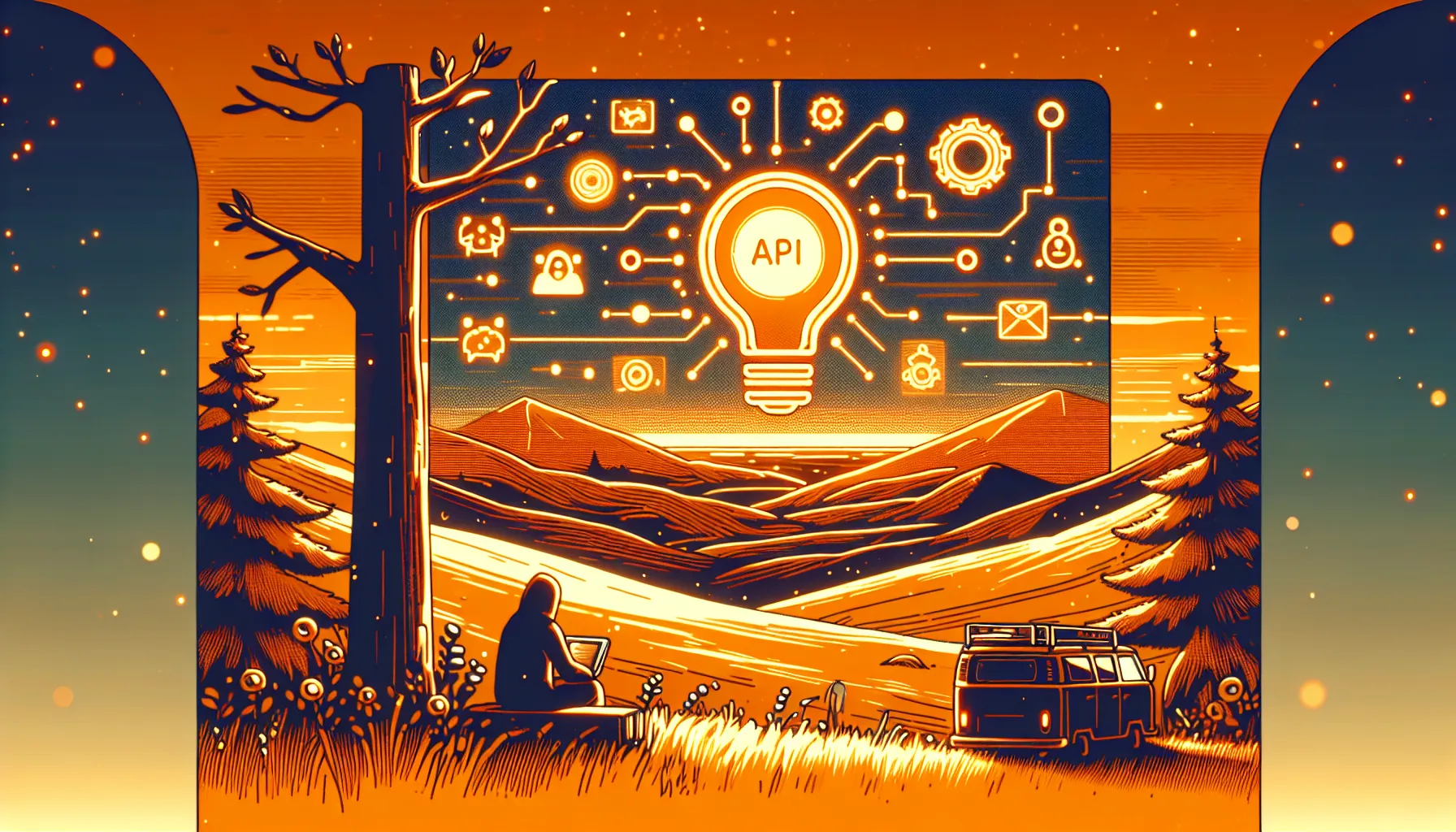The Insider’s Guide to Unearthing Website APIs
Wed Aug 30 2023
|API Archive
Introduction
Application Programming Interfaces (APIs) are the backbone of communication on the internet. They allow different software systems to interact with each other by exchanging data and functionality. As more and more businesses and organizations make their systems available via APIs, it opens up exciting possibilities for developers to build innovative applications and mashups using these digital building blocks.
This comprehensive guide will take you on a journey to discover the wonderful world of web APIs. You’ll learn API basics, tools and techniques to find hidden APIs, understand how to analyze API communication, and actually try interacting with APIs using code. By the end, you’ll have the skills to start tapping into the wealth of APIs across the internet. So let’s get started!
The ABCs of APIs
The Essence of an API
An API, or Application Programming Interface, is a set of protocols, routines, and tools that enables different software systems to communicate with each other. APIs work by exposing certain functions and allowing external programs to access them in a controlled manner.
For example, the weather bureau’s website may have an API that shares real-time weather data. A mobile app developer can use this API to pull weather information into their app. Every time you use an app that shows data from another source, there’s an API powering it behind the scenes.
A Brief on REST
Most modern web APIs follow the REST (Representational State Transfer) architectural style. REST APIs adhere to specific principles that make them easy to use, scalable, and flexible. They use HTTP requests to access and manipulate data, communicate with JSON or XML payloads, and are organized around endpoints and resources.
Due to these advantages, REST has become the standard for web APIs. When exploring undocumented APIs, you can often assume they are RESTful to understand how to interact with them.
The Digital Sherlock: Tools to Discover APIs
Unveiling APIs with Chrome DevTools
Chrome Developer Tools are invaluable for API discovery. Here’s how to use them:
-
Open Chrome and go to the website you want to inspect.
-
Right click anywhere on the page and select ‘Inspect’. This will open DevTools.
-
Click the ‘Network’ tab. This shows all network requests made by the page.
-
Refresh the page. You’ll see new requests appear under the Network tab.
-
Click a request and inspect the URL, headers, response preview and other details. Requests to API endpoints are often visible here.
-
Filter requests by XHR to focus on AJAX requests which often contain APIs.
Using DevTools in this manner reveals clues about APIs in use on a website. You can repeat these steps on different pages to uncover more APIs.
The Utility Belt of Browser Developer Tools
Other browser developer tools like Firefox’s Inspector and Safari’s Web Inspector also have Network tabs that can be used similarly. Firefox has a useful ‘Copy as Fetch’ option to easily test API requests.
Browser extensions like RESTClient and Talend API Tester add API testing capabilities directly in the browser. They are great for experimenting with APIs as you discover them.
From Curiosity to Discovery: Identifying APIs
Code Inspection 101
A website’s client-side JavaScript code contains a treasure trove of information about the APIs it uses. Here are some common patterns:
-
URL patterns like
/api/or/webservice/often indicate API endpoints. -
Library imports like
import api from './api'show APIs being used. -
Initialization code like
const api = new API('/api/')instantiates API clients. -
Method calls like
api.getUsers()are used to call API functions.
By systematically going through code, you can make educated guesses about the APIs exposed by a website.
Browser Developer Tools: Your X-ray Vision
The Network/XHR tabs in browser dev tools reveal API requests going out from the website. By analyzing these requests and responses:
-
You can find the API endpoints being hit.
-
Examine request headers for clues about authentication mechanisms.
-
Check response codes to see APIs returning success (200) or errors (400, 500).
-
Preview response data to understand the API structure.
-
Identify data formats like JSON being used.
Meticulously going through the Network logs allows you to reverse engineer the API architecture.
The Legality of Web Scraping
While inspecting code and network requests is fair game, wholesale copying/downloading of data is often prohibited. Ensure you:
-
Only inspect code and requests needed to understand the API structure.
-
Do not excessively hammer APIs causing denial of service.
-
Do not use discovered APIs for commercial purposes without permission.
-
Do not violate terms of service or copyright protections.
Decoding the API Messages
Capturing API Requests
The Headers tab in DevTools allows you to analyze API request headers in depth:
-
The Request URL shows the endpoint being called.
-
The Request Method indicates GET, POST, PUT etc.
-
Headers like Authorization provide authentication details.
-
Parameters contain input data being passed to the API.
-
Cookies may store session ids or API keys.
This reveals precisely how the frontend is communicating with the API.
Demystifying API Responses
API responses can be previewed and parsed in DevTools using the Preview and Response tabs.
-
The preview pane shows formatted JSON/XML responses.
-
The raw response body can be copied out to analyze in a JSON formatter.
-
Errors contain codes and messages explaining failure reasons.
-
Successful responses include requested data or confirmation of actions.
Thoroughly dissecting responses helps make sense of API output.
Converse with Servers: Fetch API in Action
An Introduction to Fetch API
The Fetch API is a modern alternative to XMLHttpRequest for making web requests. It offers a simple, promise-based interface for calling APIs:
js
fetch('/api/users')
.then(response => response.json())
.then(users => {
// Use users data
})
Fetch makes it easy to work with web APIs without needing libraries like jQuery.
Crafting a Fetch Request
Here is how to make a basic fetch call:
js
fetch('/api/users', {
method: 'GET'
})
.then(response => {
if(response.ok){
return response.json()
}
})
.then(data => console.log(data))
.catch(error => console.log(error))
The first argument is the API endpoint URL. The second options argument can specify the method, headers, and request body. We handle the response and errors using promises.
Navigating the Maze of REST APIs
Understanding REST APIs
REST APIs expose endpoints that represent resources (e.g. /users), which support CRUD operations using HTTP methods like GET, POST, PUT, DELETE.
They can be navigated by exploring:
- The base URL – e.g.
https://api.example.com - Versions –
/v1/,/v2/ - Endpoint paths –
/users,/posts - HTTP methods on endpoints
- Query parameters, headers, and request bodies
Endpoint Exploration
Once the base URL is known, we can methodically go through different paths, methods, parameters etc. to understand the API’s capabilities.
For example, making a GET call to /users may return a list of all users, while /users/123 returns user with ID 123. POST /users could create a new user.
Trying out different permutations reveals the API’s structure.
Tips, Tricks, and Cautions
Practical Examples
-
Use Postman to easily save and organize API requests as you experiment.
-
Implement a basic frontend app powered by the API to truly understand it.
-
For authentication, inspect network requests to see how the official website gets authorized.
Ethical Considerations
-
Avoid making an excessive number of requests that may overload the API servers.
-
Do not misuse discovered APIs to scrape data at large scales.
-
Be responsible with API keys and credentials obtained from inspecting code/traffic.
Empowering Your API Adventure
Further Resources
-
The Practical Guide to API Design by W. Pautasso for API architecture patterns.
-
Postman’s Learning Center for API testing tutorials.
-
MDN Web Docs for JavaScript references on Fetch, Promises etc.
-
API communities like the ProgrammableWeb Community to connect with experts.
FAQs
Q: What if the website uses obscure/complex code patterns?
A: The key is patience. Meticulously go line-by-line if needed. Refer to documentation of libraries used.
Q: How can I guess the right endpoint paths and parameters?
A: Look for clues in code variable names. Brute force different permutations. Check docs if available.
Conclusion
I hope this guide has equipped you with the essential skills and knowledge to start uncovering the sea of APIs across the web. The world of APIs is filled with incredible potential. Armed with the right tools and techniques, you can tap into this potential to build awesome applications.
So go forth, explore, tinker, create! And most importantly, have fun on your API adventure!


